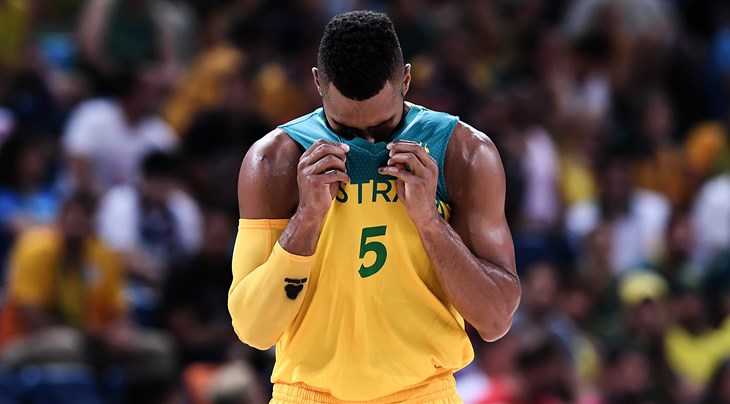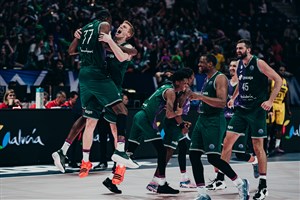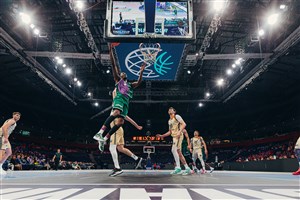
Tough tests for Boomers, Tall Blacks
MELBOURNE (Paulo Kennedy's View from Downunder) - The doubting Thomas crew were pretty loud at times when word of the new FIBA Basketball World Cup qualifying system first got out Downunder.
The questions posed were along the lines of who wants to see the Boomers thrashing Sri Lanka, Thailand and Uzbekistan by 100 points? What benefit does this provide Australian or New Zealand basketball?
Of course, it was pretty obvious Tom and his friends didn't know a lot about Asian basketball, nor FIBA's New Competition System, as the official draw for the Asian section of World Cup Qualifiers showed on Sunday.
Two realities always meant the Boomers and Tall Blacks would get some decent tests during Asian qualifiers. The first was that only 14 teams from the old Asian zone would be in Division A, limiting the number of minnows.
The second and most important was the groups being split on geographical terms for the first round of games, given the immense size of the combined Asia/Oceania zone. It's a long way from New Zealand to Kazakhstan.
Given Australia and NZ move into the eastern group, alongside China, Korea, Japan, Chinese Taipei and the Philippines, that side of the draw has seven of the top 10 teams in Asia.
When you look at the results of Sunday's draw in Guangzhou - one of the host cities for China 2019 - those realities have shown themselves to be true.
#FIBAWC | Australia will face the Philippines, Japan and Chinese Taipei in Group B of the Asia qualifiers starting in November! #GoBoomers pic.twitter.com/648ldMP2o8
— Basketball Australia (@BasketballAus) May 7, 2017
New Zealand were drawn in Group A alongside two of the most successful teams in FIBA Asia Cup history, China and Korea. The other spot is taken by Hong Kong, which should be an easy beat for the Tall Blacks.
Australia are in Group B against back-to-back FIBA Asia Cup silver medallists the Philippines and two recent fourth-placed teams in Japan and Chinese Taipei.
Considering the top three from each group progress to the second round, neither Boomers nor Tall Blacks will be shaking in their basketball boots, but they will also be aware there are some challenges coming.
When you look at Australia's three opponents, all are small island states with the vast majority of their best players competing at home in their national leagues. That makes it possible to have quality preparation throughout the year, not just in the days leading up to a qualifier.
The Philippines squad has already been training together on a weekly basis for close to two years, and indeed this is the Group B team that poses the biggest threat to the Boomers.
If you look at their international record over the past three years, there haven't been a lot of wins, but there have been many near misses against world class opposition.
They lost to both France and New Zealand by nine at the FIBA Olympic Qualifying Tournament in 2016 and lost to Croatia by 3, Greece by 12, Argentina by 4 and Puerto Rico by 4 at Spain 2014, with wins over respectable teams from Iran (by 14) and Senegal (by two) also coming in that period.
With probably 10 of Australia's top 20 players plying their trade overseas during the club season, the Philippines will be tough to beat on their home turf. The Boomers also can't take trips to Tokyo and Taipei lightly either, both those teams have produced big upsets in recent years.
In terms of the Tall Blacks, they share the advantage of many East Asian nations of having most of their best players playing club basketball at home. Their added advantage is they play together for the one club, the Breakers in the Australian NBL.
This should hold New Zealand in good stead through the Qualifiers, particularly for home games, but trips to Korea and China will not be a walk in the park.
The Tall Blacks have travelled to both destinations more than once in recent years and know how parochial the crowds are and how much their opponents' grow an extra leg on home soil.
While the Kiwis only have to finish ahead of Hong Kong to progress to the second round of qualifiers, results against China and Korea (assuming they progress) will carry over, so any slip-ups could prove costly in the final standings.
For those unfamiliar with the qualifying system, the top three teams from each of the four Asian groups move into the second round, which features two groups of six - for example, the top three from groups A and B combined.
From there the top three of each group progress to the FIBA Basketball World Cup, with the best performing fourth-placed team also winning a berth. Keep in mind, China get automatic qualification as the host country, so it is likely the top eight will actually make the cut.
In essence, both Australia and New Zealand will have to do something badly wrong not to qualify, but it won't be play sailing all the way through.
From a Boomers perspective, the new system gives a fantastic opportunity to blood new players in far more meaningful and cutthroat international situations than the usual 'friendly' tours. It's also great for the coaching staff to more regularly have to manage tournament-style situations.
#FIBAWC | @AndrewGaze10 says new qualification system gives Aussies better chance than ever to play for the Boomers: https://t.co/WxRjEtg8PW pic.twitter.com/7DI8oTQybj
— Basketball Australia (@BasketballAus) May 11, 2017
There will also be chances in the June/July window and particularly the September window for fans to see our best players from abroad in the green and gold, especially given the TV-friendly time-slots.
For New Zealand, it’s an ideal chance to raise the Tall Blacks’ profile at home more than just the biennial one-game showdown against Australia in the old Oceania set-up.
Given Basketball New Zealand’s constant struggle for revenue, the home qualifying matches are a tremendous opportunity to work with the Breakers and Sky Sports to provide a mid-week TV offering that captures plenty of eyeballs and gives sponsors a reason to invest.
Paulo Kennedy
FIBA
FIBA's columnists write on a wide range of topics relating to basketball that are of interest to them. The opinions they express are their own and in no way reflect those of FIBA.
FIBA takes no responsibility and gives no guarantees, warranties or representations, implied or otherwise, for the content or accuracy of the content and opinion expressed in the above article.

















